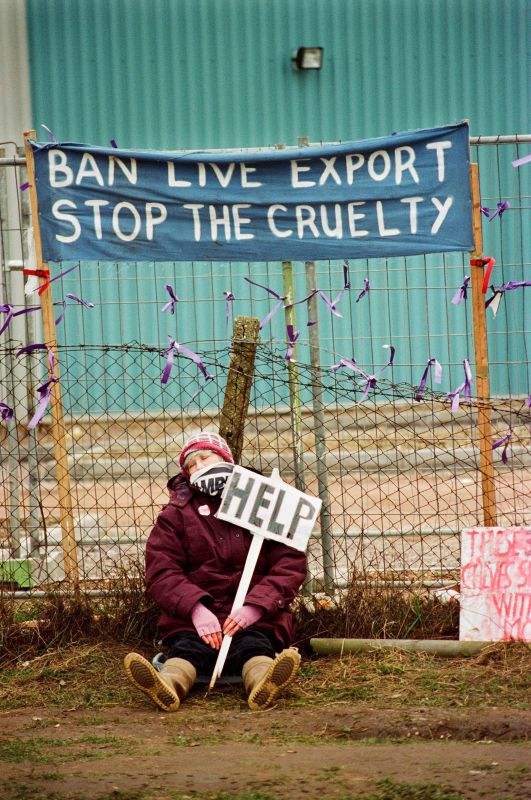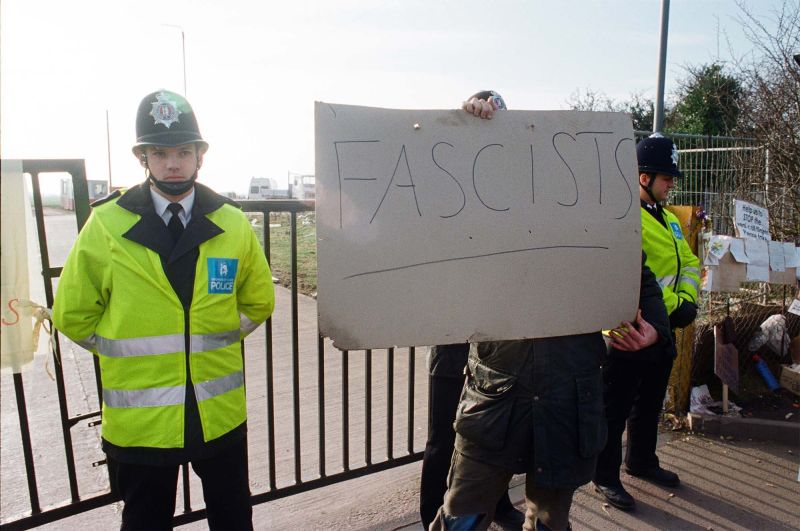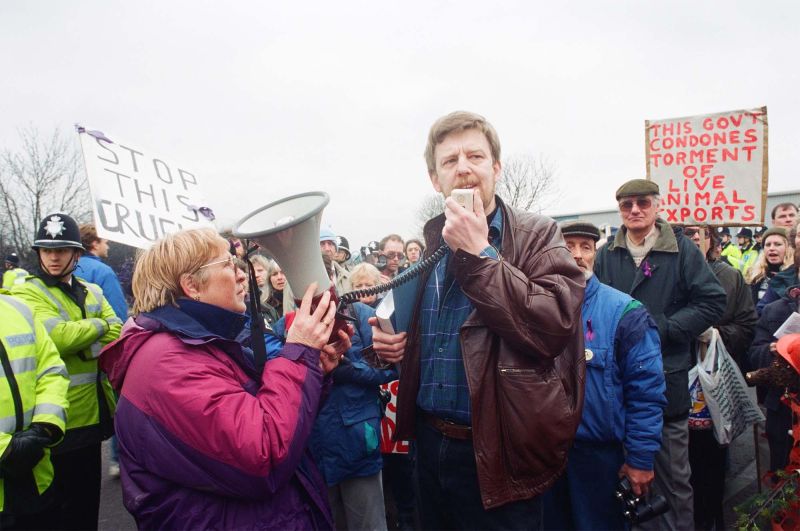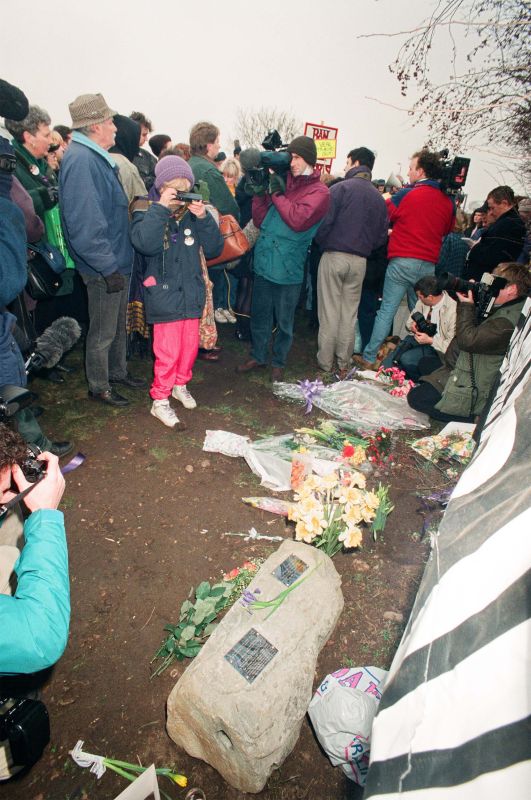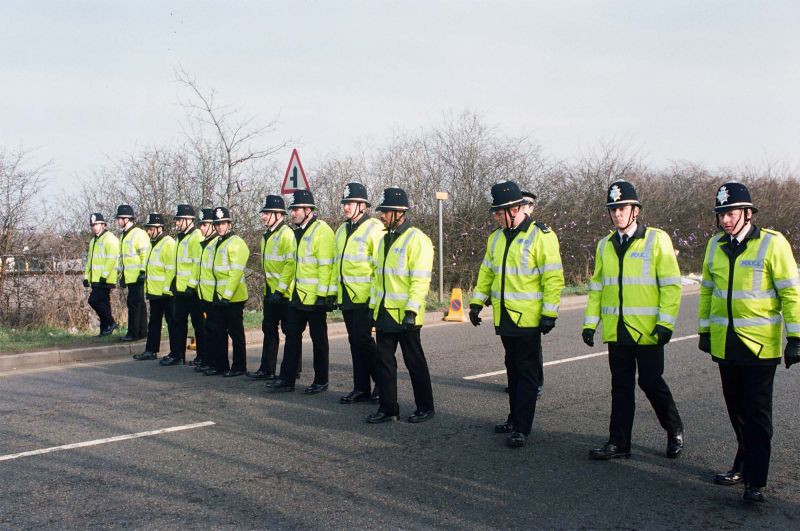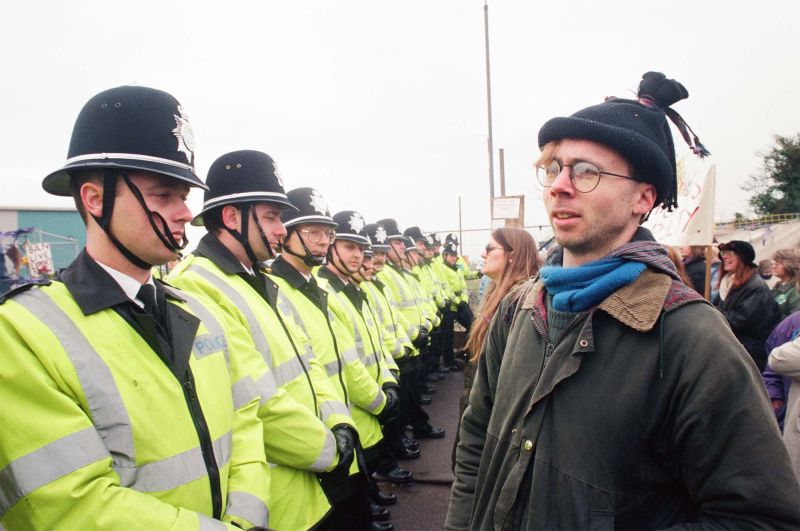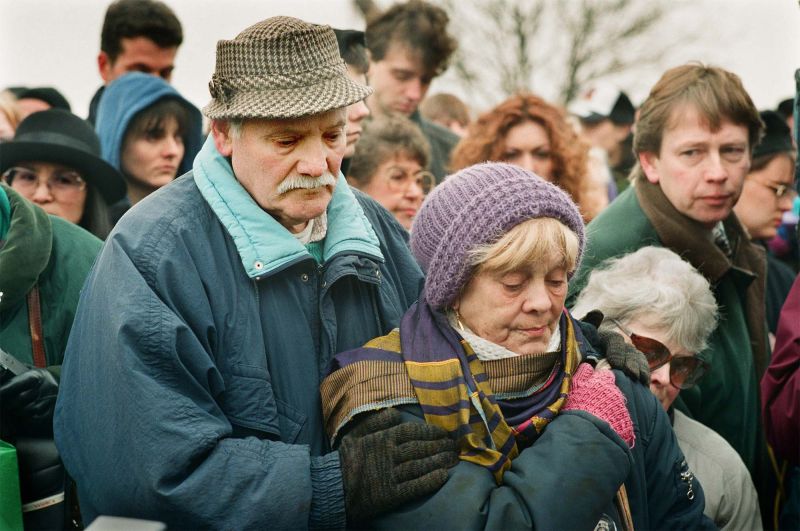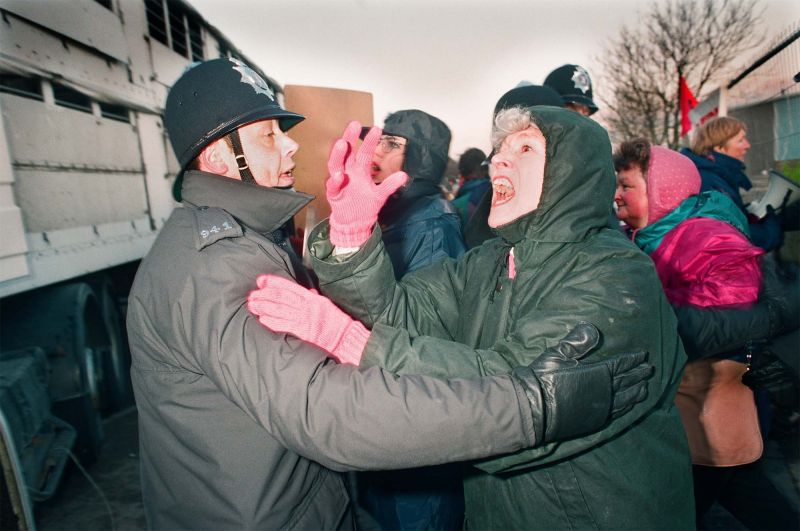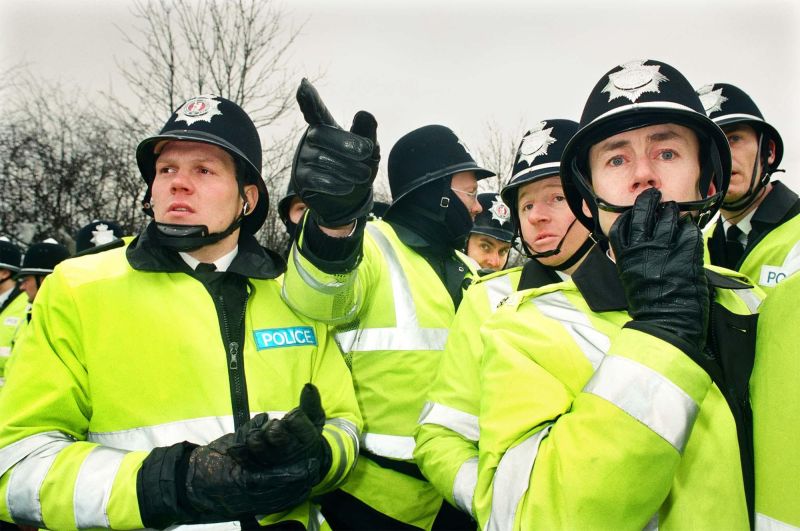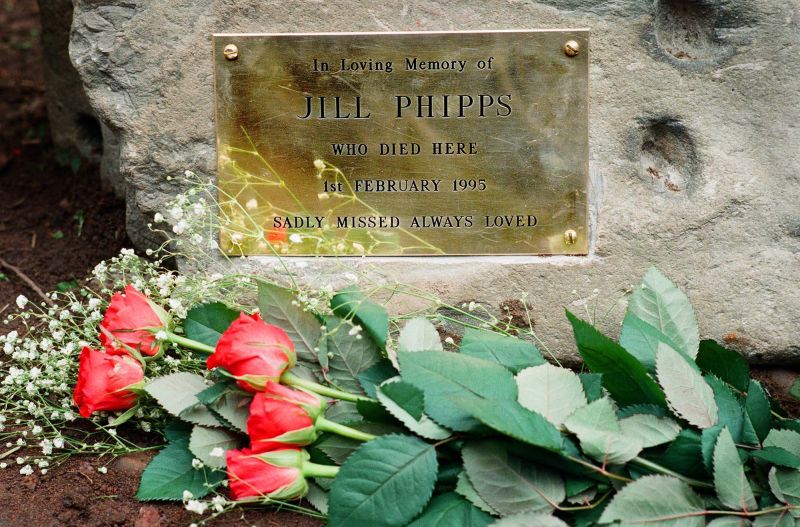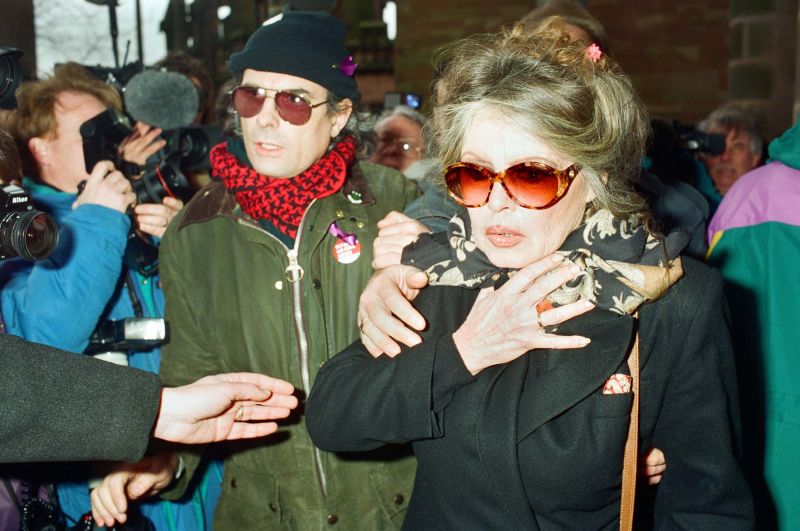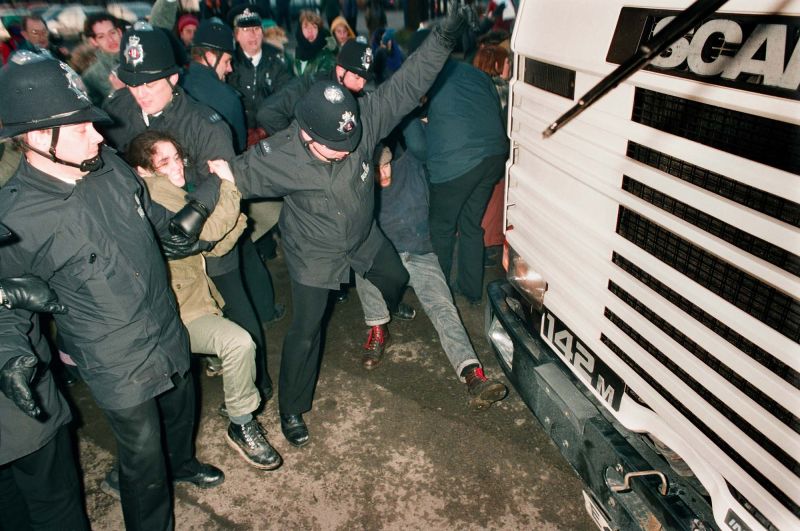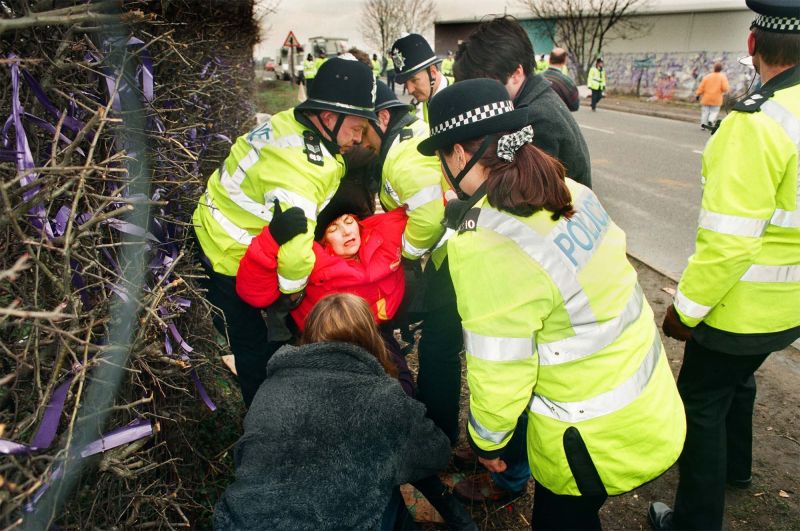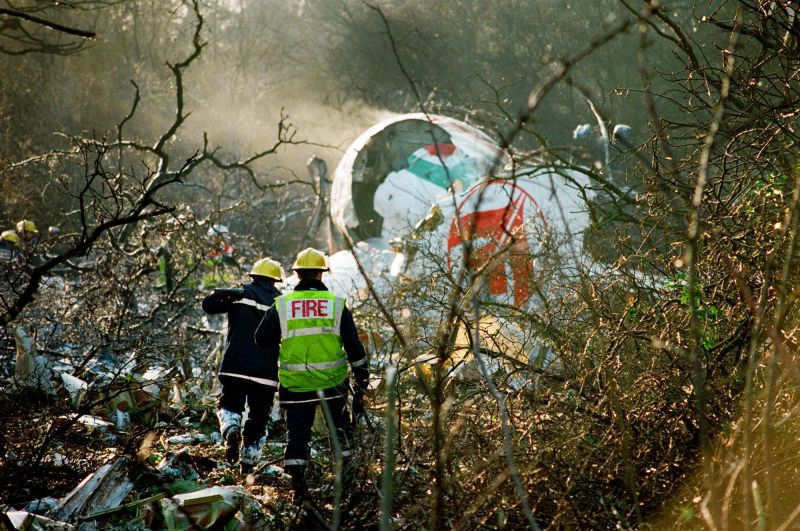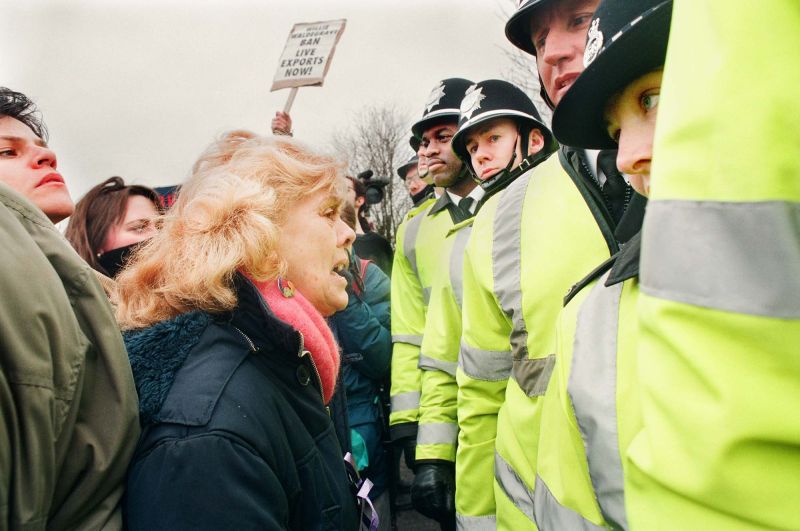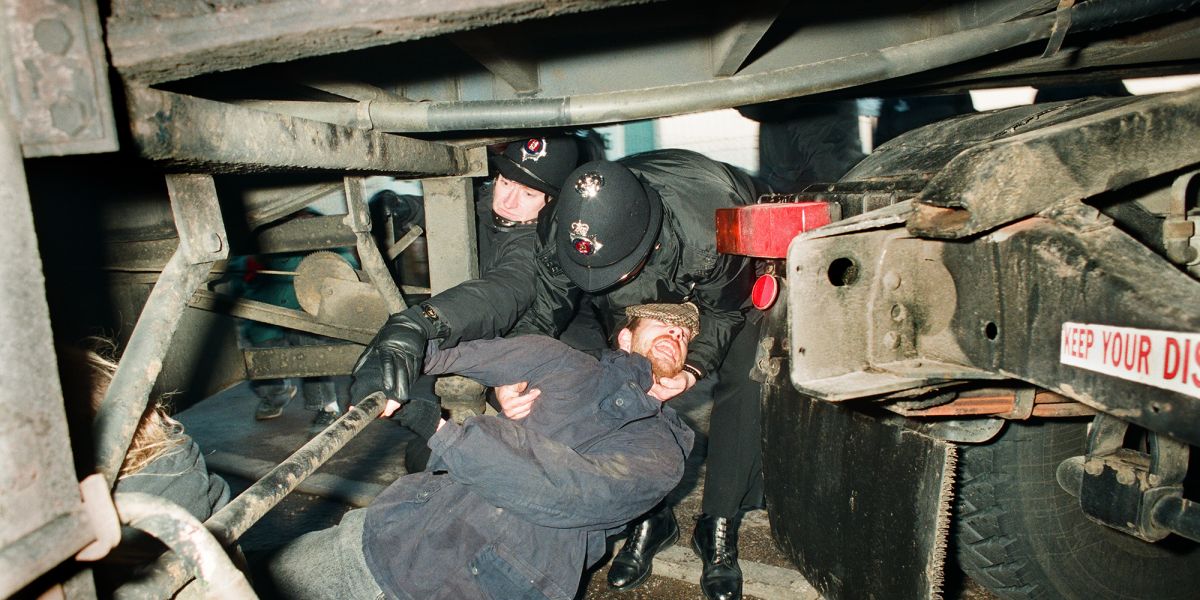On the 1st of February 1995 a group of animal rights campaigners gathered on the outskirts of Coventry at Baginton airport.
All Photographs were made between the winter of 1994 and the 1st of February 1996. Copyright Jason Scott Tilley.
There were 35 protestors, a small number of media personnel, and as always, a strong police presence. As an accredited member of the press at that time I should perhaps not admit that I am now very grateful I was not there to witness that days horrible events and that other work commitments meant that I was working elsewhere in the country.
Animal rights campaigners had been gathering, some living, at their make-shift camp on the boundary of the airport for very close to one year. They were there to bring attention to the cruel and controversial export of live animals by phoenix aviation to the continent via the airport and on many occasions I had been witness to ugly scenes between police, activists and demonstrators.
On that day in February, as had become normal and as the lorry carrying its cargo of calves began its approach along Rowley Road towards the airport perimeter fence, police officers stood shoulder to shoulder and drew their line across the road, their presence allowed these lorries access to Baginton airport.
On this particular day a small number of demonstrators managed to break through the police line and one of those who broke through that line was a woman called Jill Phipps. Jill managed to climb onto the lorry; she lost her grip, slipped and was crushed to death under the wheels of the moving vehicle.
Jill was a prominent animal rights campaigner and her violent death and subsequent high-profile funeral at Coventry Cathedral that was famously attended by Bridget Bardo drew national and international media attention onto the legal European trade and transportation of live animals from the United Kingdom.
Two months before Jill’s death, a phoenix aviation aircraft that was being used in the transportation of British farmed calves crashed after clipping a pylon in bad weather on its approach to the airport. All five members of the cabin crew on board the plane died in the crash and as it hit the ground in Willenhall Wood it narrowly avoided a nearby housing estate that would surly have killed many people on the ground in Coventry. This was a terrible event but could easily have proved to be catastrophic, and it was the first time that national main-stream media attention was focused onto the export of live animals and because of that plane crash all live exports were temporarily suspended out of Baginton.
On the day of the plane crash, myself and another press photographer colleague Andy Fox, a man I’d known for a number of years managed to gain access to the back of Willenhall wood. We made our way slowly, cautiously through the wood. I will never forget the idyllic sight of a small roe deer that was a brown reddish colour skipping away from us as we approached the plane. Its camouflage seemed unfortunate as it stood out against its dark green fauna, then before us the surreal sight of the white carcass of a plane, its undercarriage face up, looking completely out of place in the centre of an urban woodland area.
Though suspended for a short time the flights resumed, I am not a vegetarian but I will never forget the whimpering cry’s I heard from the calves that came from inside those large lorry’s. The calves were transported in cold, cramped, in-human conditions, they were already traumatized having recently been separated from their mothers and were being flown to their eventual deaths in Europe.
It was impossible not be moved by the sight and sound of those creatures being treated in such a dispassionate way. These calves were the living by-product of our dairy industry, the unavoidable bovine consequence of our love for a cuppa or a cold pint of milk.
What had always interested me as I watched this ‘people verses the state’ struggle unfold, was the passion and commitment to the cause shown by both sides on the front line. I am talking of protesters and the police alike. On one hand the animal welfare campaigners, who, in the short-term it appeared had little or no chance of realistically stopping those Lorries from entering the airport and on the other hand the police, whom, from their non political stance were only there to allow a perfectly legal, though morally reprehensible trade from continuing.
I often pondered on the conundrum that some animal rights activists, who correctly in my opinion, had taken the moral high ground against society’s indifference in-human treatment of animals would on the other hand think nothing of smacking another human being, albeit a police officer, in an attempt to stop those Lorries from entering that airport. I always found this contradiction amusing and in my opinion that lack of discipline gave some police officers an arguable and legitimate reason to strike back and believe me they did.
The way that those two opposing sides fought in the early days of the demonstrations was on occasion more like the Key Stone Cops against Tom and Jerry but the cartoon like escapades grew progressively more serious and one day I also found myself dangerously close to the wheels of a lorry as I scrambled from beneath a moving ambushed vehicle.
The driver revved his engines on a number of occasions, it was obvious that he had no idea of the drama unfolding underneath his cab. There was an activist desperately trying to attach himself to the axel of the vehicle whilst two police officers battled tirelessly to release him and also me, a press photographer lying on the ground on the other side of the lorry trying desperately to record the event.
Selected Gallery
